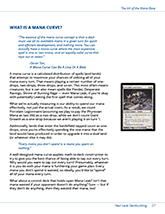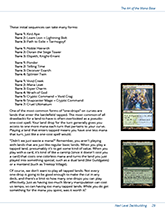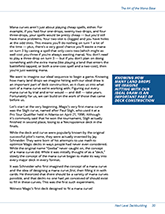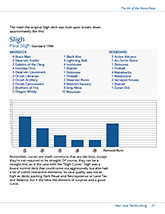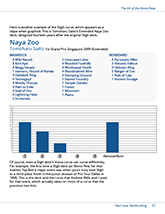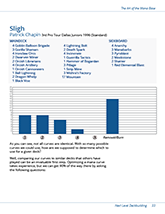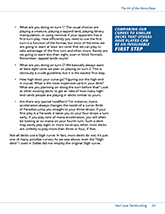Deckbuilding is a fascinating subject with more layers than can ever been fully explored in one or a dozen articles. After collaborating with many of the game’s greatest deckbuilders, Next Level Deckbuilding tackles this crucial dimension of the game, covering every facet, including:
- Evaluating cards, choosing which to play, and how many
- How to metagame, including tuning decks and building sideboards
- How to actually improve at deckbuilding, whether you are more focused on crazy new concepts or tuning existing and popular decks
- How to build archetypes in Magic, as well as how to tune decks to beat them
- How to use each of the different types of threats and reactive cards
- Probabilities in deckbuilding made easy
- Deckbuilding in Commander
- A history of a major deck ever made, as well as lessons to be learned from over 100 of the greatest deckbuilders in Magic
- Easy to understand breakdowns of every major component of deckbuilding, including the art of the mana base
- And much, much more!
Today I’d like to share a little bit of the mana base section of the book. This particular passage is the beginning of the mana curve section.
In addition to completing the mana curve discussion, Next Level Deckbuilding covers:
- The Art of the Mana Base
- How Many Land to Play in Each Kind of Deck (Exactly)
- Playing Enough of Each Color
- The Types of Lands and How Best to Use Them
- Examples of Successful Mana Bases
- The Opportunity Cost of Expensive Spells
- Ways to Deal with Eventual Flooding
- Templating – How to Build Off of Successful Mana Bases
Mana bases are one of the most important elements of deck construction, and Next Level Deckbuilding provides the equivalent of a ten-part series on how to understand mana bases and build them successfully. As important of a subject as it is, however, it is still just 58 of the 472 pages of material in Next Level Deckbuilding!
Join me here tomorrow for another sneak peek at Next Level Deckbuilding, the ultimate guide to mastering deckbuilding in Magic: The Gathering!
Patrick Chapin
“The Innovator”

